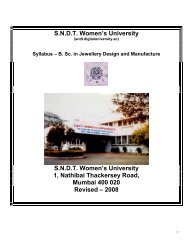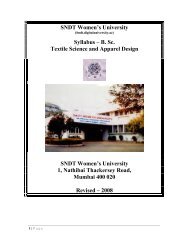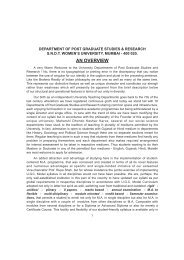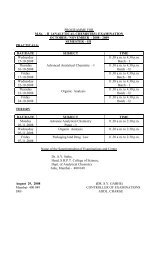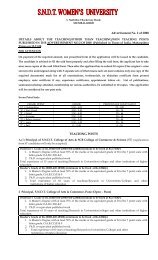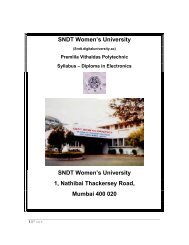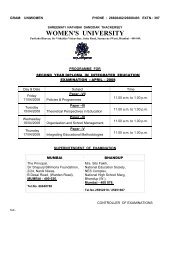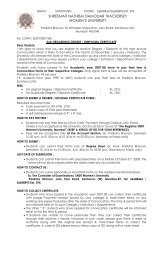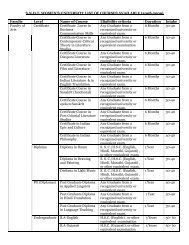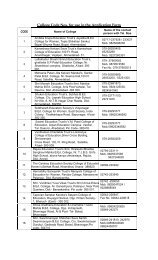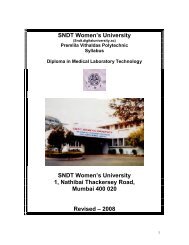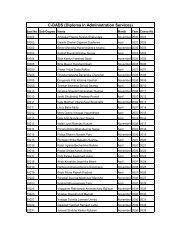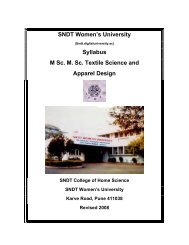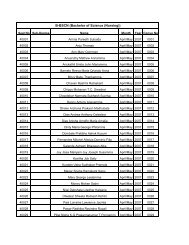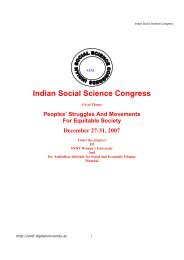XXXI Abstracts Part 1 page 1-189
XXXI Abstracts Part 1 page 1-189
XXXI Abstracts Part 1 page 1-189
You also want an ePaper? Increase the reach of your titles
YUMPU automatically turns print PDFs into web optimized ePapers that Google loves.
is deficit, the quantum of biomass and food grain to be provided from the regional pool would be estimated to overcome the<br />
limitation of the deficit of endowment. Additional employment assistance and concessional credit need to be provided above<br />
the proposed norms. For the cluster and for the sub-region the micro planning process needs to be taken up. The outcome<br />
of the macro planning would be determined to extend the sub region where aggregate production of food grain and biomass<br />
would be sufficient to build the required size of the food grain and biomass pools. There is also another way of building<br />
pools that is by integrated use of local and existing water through intra-watershed or intra-basin pooling. Incentive for such<br />
pooling can be created through price incentives and additional concessional credit. Studies show that by using the price<br />
incentive and credit concession the surplus in any sub basin can be substantially enlarged through shift to biomass and<br />
water efficient cereal production in lieu of cash crops. This way the inter-basin water transport and inconvenience can be<br />
avoided.<br />
Due to pre-occupation with efficiency in commodity production, rural populations have been neglected and<br />
exploited. The issue of a socially just and meaningful rural infrastructural support for the development of the quality of<br />
human life in the rural sector continues to go unaddressed. These problem areas of today’s agriculture must be addressed;<br />
in fact, the time is long overdue. Furthermore, the fundamental assumptions behind the twentieth century agriculture need to<br />
be questioned. Given the many centuries of exhaustive agricultural history, the specific goal ought to be that of achieving a<br />
global regenerative and nationally self-reliant food system.<br />
The word regenerative refers to the idea that in the twenty-first century, agriculture, for the first time in agricultural<br />
history except for traditional paddy rice production found in the tropical world, will regenerate its resource base of soil, water,<br />
and biodiversity.<br />
Agriculture, of all the sciences, technologies and industries, stands alone in having this unique potential. The world<br />
‘sustainable’, which is frequently used in references to new agricultural futures, too often is interpreted to mean that, given<br />
necessary resources, even a poor system can be sustained for a long time, provided only that a community has the ability to<br />
obtain the needed resources. To move beyond this ambiguity, the word regenerative is used. The idea of regenerativeness<br />
goes beyond conceptualizations of conservation, for this latter word usually just conjures up the idea of being careful about<br />
using a resource in order to extend its time horizon as much as possible. Regeneration, in contrast, and particularly in the<br />
case of agriculture, refers not only to the replacement of the essential resource, but, hopefully, to its enhancement.<br />
Income Generation<br />
The resource endowment for a gram sabha’s required endowment of land and water to create food security and<br />
meeting energy needs is presented in the following table.<br />
Income Generation<br />
The resource endowment or a gram sabhas the required endowment of land and water to create food security and<br />
meeting by energy needs is presented in the following table.<br />
Land Use and Water Allocation for 100 h.h. gram sabha<br />
to Create Food Security & Meet Bio Energy Needs<br />
Land Use Area/ha Water Requirement Biomass output<br />
ha/mm<br />
terms per year<br />
Wood Bamboo 20 5000 200(600)<br />
Fiber<br />
NTF 15 3000 60(120)<br />
Organic<br />
Vegetable 4 4000 200(fresh wt)<br />
Food Grains 20 5000 80(Grain)<br />
Pulses & fodder 10 3000 100<br />
Sweet Sorghum 20 5000 400<br />
Nitrogen 10 3000 100<br />
Fixing Species 94 ha 2800 1120<br />
dry matter coal equivalent



